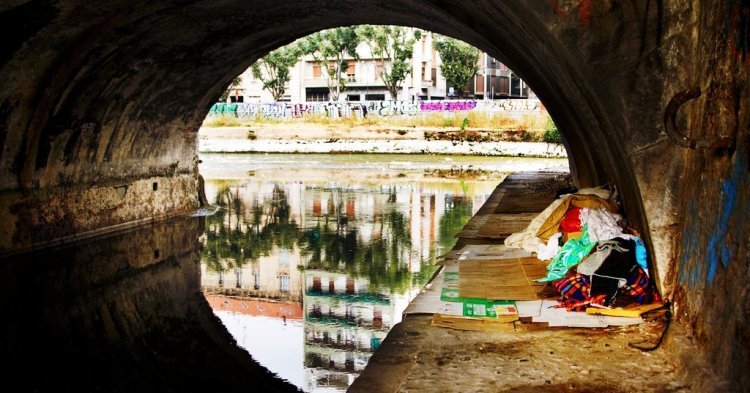Growing worldwide, “inequality is the defining issue of our time”, as claimed by Barack Obama. In-depth and comprehensive analyses, such as the World Inequality Report (WIR, 2018), illustrate the dynamics of inequality in a long-term comparison. According to the WI Lab research team, “since 1980, income inequality has increased rapidly in North America, China, India and Russia”. Above all, the disparities in distribution of wealth among citizens: “the global top 1% earners has captured twice as much of that growth as the 50% poorest individuals”, with a progressive impoverishment of the middle classes in EU and US. As the World Bank’s Changing Wealth of Nations 2018 study reports, "global wealth increased 66 percent from 1995 to 2014 (from $690 trillion to $1,143 trillion in constant 2014 US dollars at market prices)”, but inequality grows because per capita wealth in high-income OECD countries is 52 times higher than in low-income countries (data 1995-2014).
Public policies in Western countries have not been able to counteract internal asymmetries with measures of wealth redistribution and protection of the most vulnerable citizens: most of all, a “combination of large privatizations and increasing income inequality within countries has fueled the rise of wealth inequality among individuals” (Wir 2018). If we are following the path of “business as usual”, as confirmed by several researches, many of the 17 Sustainable Development Goals (SDGs) promoted in the 2030 UN Agenda may not be reached, further expanding the socio-economic gaps between nations compared to past decades. Growing global inequalities risk undermining social security, political trust and transnational cooperation.
Changes in inequalities within countries
Economic development, social protections and inequalities, how are they related in a global framework? A report made by the Bruegel think tank points out a “slight decline in global income inequality among the citizens of 146 countries from 1988-2000”. Approaching the nations with the highest GDP outside the European Union, different scenarios can be outlined: in the USA, “the top 1% wealth share rose from 22% in 1980 to 39% in 2014”. [1] Meanwhile, in the 1990s, the opening to international markets, joined by the progressive transition to the capitalist paradigm, characterised China and Russia, where ‘the top 1% wealth share, between 1995 and 2015, doubled from 15% to 30% and from 22% to 43%, respectively’. [2]
Economic reforms and financial tools, adopted from the 1980s to the early 2000s, focused on the reduction of fiscal progressivity, which, as shown by statistical comparisons, coincided with the period of greatest growth in inequality. The fiscal model adopted by many emerging economies in Africa and Asia in the last two decades has had similar effects: although many countries have increased overall “widespread wellbeing”, socio-economic asymmetries are expanding and diversifying in access to education, job opportunities and rights protection. The sustainability of tax systems is crucial, as pointed out by the Wi Lab researchers, who mention the publication of the Panama Papers in 2016 or the Paradise Papers in 2017, revealed by investigative journalists. The solutions proposed in the report include combating tax evasion, which “increased considerably since the 1970s and currently represents more than 10% of global GDP”, as well as investments in training and “democratic access” to education.
Comparing EU member states
Studies of income and wealth inequality gaps reveal remarkable asymmetries in the European Union, where tight economic and political ties can provoke “chain reactions” among member states. In Social Europe’s Inequality in Europe report (2018), Javi López MEP explains that “ while one of the five goals of the Europe 2020 strategy aspired to reducing by at least 20 million the number of people in or at risk of poverty and social exclusion (from 115.9 million in 2008 to 95.9 million in 2020), in 2015 these citizens already accounted for 117.6 million in the EU-28. Moreover, 32.2 million disabled people were at risk of poverty and social exclusion in 2010, as well as 26.5 million children, taking the overall percentage to unacceptably high levels (23.7%)”. In 2014, the top 10% owned 55% of total French wealth, compared to 50% in 1984, the lowest level ever recorded (WIR 2018).
Les trente glorieuses (1945-73) have changed the transalpine socio-economic profile: after the Second World War, difficulty in reconciling between capital and labour has produced growing inequalities in the distribution of national income, as well as wage differentials by gender and type of employment, also due to the end of indexing wages to inflation (1983). Expanding job market, investments in research and development, and robust economic growth, have not stopped inequalities in Germany, which have grown since the reunification of the country (1990). The share of the bottom half (for income owned) declined significantly from 22% in 2001 to 17% in 2013, a trend that went hand in hand with the growth of the low-income sector, with striking differences between the highest and lowest income classes (WIR 2018). Both sides of the Atlantic are involved in global development schemes to combat inequality, differing in the way of structuring development processes and social inclusion.“Under the US-style, high inequality growth scenario – as written in the World Inequality Report 2018 -, the half of the poorest world population earns €4 500 per adult per year in 2050, versus €9 100 in the EU-style, low inequality growth scenario (for a given global average income per adult of €35 500 in 2050 in both scenarios).
Focus on Italy: one nation, many inequalities
Italy is experiencing a peculiar situation, marked by increasing asymmetries between the northern and southern regions. A long-standing productive and industrial gap, especially in the most depressed areas of central and southern Italy, has generated the “breeding ground” for socio-economic inequalities. A recent report by SVIMEZ (Association for the development of industry in the South) shows some critical issues: from 2002 to 2016, more than 1,800,000 people left Southern Italy; three quarters are young persons (15-34 years). Their departure, the researchers explain, “has caused a serious depletion of the demographic and social structure”.
The consequences of the ten-year financial crisis, low national growth and high public debt, have impacted on investments, jobs, social assistance and education: observing Eurostat data (2017), 40% of the Italian population with the lowest incomes in 2016, earned just 19.1% of total incomes with a fall from 20.2% in 2010 and from 19.7% in 2015. According to Massimo Baldini (Lavoce.info), “the growth of the early 2000s has led to a decline in inequality and the crisis that began in 2008 a subsequent increase”. Commenting on the Eurostat data, he underlines that “the average real income of 10 percent poorest people, confirms that this group in Italy has experienced a sharp drop in income, while the same group in Germany and France not only has a higher average income, but it also decreased less or remained substantially constant".
Remedies
Since ’90s, the global narrowing of inequalities is considered a historical exception to a rising trend started with second industrial revolution - the World Bank has observed that “from 1820 to the 1990s, global inequality steadily rose”. Taking on inequality as a challenge for the future requires the widest sharing of interests among citizens and policy makers, necessarily supported by transnational cooperation projects to reduce structural asymmetries, such as microcredit to stimulate entrepreneurship or better fiscal sustainability for small and medium-sized enterprises.
At the base of income and wealth inequalities, as previously mentioned, high levels of tax evasion and wide range of income distribution weaken efficiency of job or welfare policies. Moreover, the uncertainties related to climate change, the growing migration flows and financial volatility need to be addressed with tools and inclusive development models for education and health, as key-factors of a new “social pact”: today, the reality is a world based on a continuous exchange of people, knowledge and goods, which can only be tackled with global socio-economic strategies.


Follow the comments: |
|
